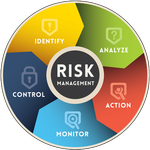District Information
About Us
Programs
School Board
For Parents
For Staff
The District believes that staff, parents, students and community members play a part in keeping learning environments safe. Each group has a specific responsibility:

24 Hour Help Lines
Police/Fire/Ambulance:
Call 911
Child Abuse/Protective
Services: 509-667-6135
Sexual Assault: 509-
888-HELP
Suicide Prevention
Lifeline: Call or text 988
National Dating Abuse Hotline:
866-331-9474 or text "loveis" 22522
Mental Health Crisis
Line: 509-662-7105
Alcohol and Drug Crisis
Line: 509-662-9673
Children and Family
Services: 509-665-0164
Domestic
Violence/Sexual Assault:
509-663-7446 or
TDD 1-800-833-6338
Crisis Text Line (text with trained Crisis Counselor)
Text HOME to 741741
Staff members should model safe behavior, monitor student and visitor behavior and reinforce the expectations set forth in a variety of behavior programs. Staff should also regularly review facility needs, plan and conduct safety drills, organize and participate in safety committees and work collaboratively to fine tune or improve prevention or preparedness plans for safe schools.
Parents or family members should be knowledgeable about safety and security procedures at their student's school, reinforce the behavioral expectations as set forth by the school district, participate in school safety discussions at meetings and alert school officials when they come across dependable information to share.
Students play a paramount role in sustaining a violence-free school environment. Threads of valuable information are tightly woven from student to student. When troublesome information enters that pattern, students should know how to identify a potential threat or danger, have a safe place to report it and believe that trustworthy adults will follow-up on this tip. Students should also help sustain a safe learning environment by practicing positive interpersonal relationship skills on a daily basis.
Community members can best support safe school efforts by modeling safe behaviors every day. Demonstrating civility, empathy, respect, non-discrimination and positive interpersonal relationships as a community sets a social standard that fosters non-violent lifestyles community-wide.
Community groups, organizations, and businesses can participate in school crisis preparedness by a way of offering time, expertise or facilities to schools for their use. In a commendable endeavor, school staff can work collaboratively with law enforcement, fire safety agencies, churches, city departments, private clubs and businesses to successfully coordinate use of alternate facilities in a crisis
Supporting Youth in Grief - One page, very informative support document from Crisis Management Institute
Crisis Management Institute website
Substance Abuse and Mental Health Services Administration